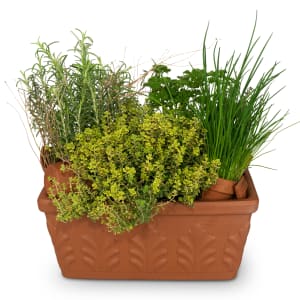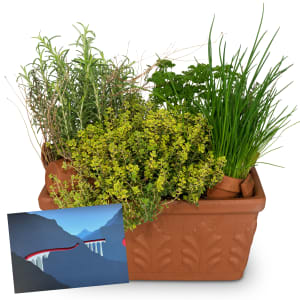Basil is spicy, slightly peppery and tastes a little like anise.
It goes well with Italian dishes, flavoring salads, antipasti,
herb sauces,
shellfish, fish, meat, poultry, eggs, and of course pizza.
Tip: add the basil to hot dishes just before serving.
Basil & Mint
Special and always a delight: basil and mint require a delicate touch.
But used correctly, these herbs are really great.
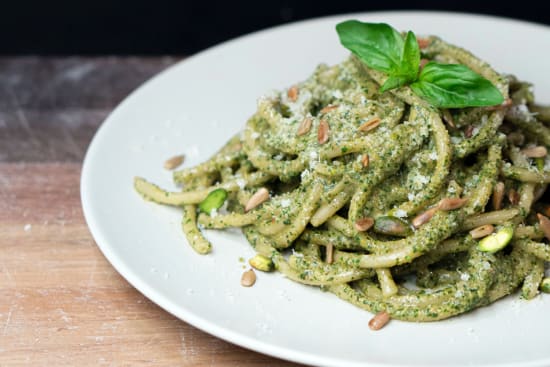
Basil - southern charm
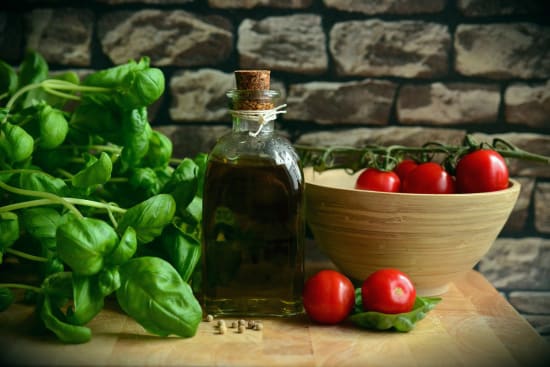
Plant annual basil in a full-sun, wind-protected location with loose,
nutrient-rich soil.
Because of its large leaf surface, basil is very thirsty.
In a pot, it's best to water it from below (in a saucer). Be careful not to moisten the leaves when watering. This promotes fungal diseases in cool weather. To avoid this, the old lower leaves should always be removed.
In a pot, it's best to water it from below (in a saucer). Be careful not to moisten the leaves when watering. This promotes fungal diseases in cool weather. To avoid this, the old lower leaves should always be removed.
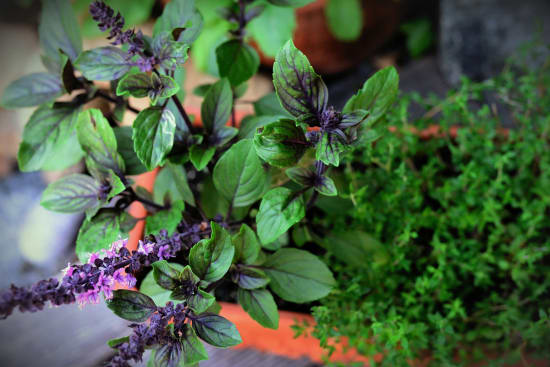
Basil - with many leaf colors and different flavors
Anyone who knows only one variety of basil has no idea
of the wide range of variations that this plant offers.
hey differ mainly in fragrance and flavor, but also in their growth habit and color.
hey differ mainly in fragrance and flavor, but also in their growth habit and color.
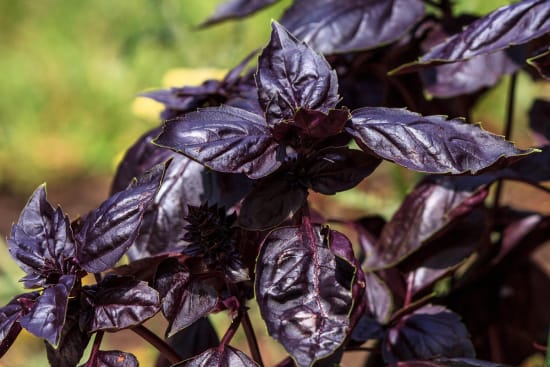
The African basil, for example, has green leaves with purple veins
and a strong floral aroma. The Genovese basil has large green leaves
and a very intense flavor. Red basil, with its dark purple leaves,
is not only a fragrance and taste sensation, but also a feast for the
eyes. Russian basil is distinguished by its red stems. Thai basil has
purple stems and tastes of anise. Cinnamon basil has purple stems and
smells of
cinnamon. And the fruity-fresh Lemon basil tastes slightly of lemon.
Tip: try different varieties.
Tip: try different varieties.

Mint - fresh and aromatic
There are more than 30 types of mint. All smell and taste refreshing
and aromatic. They flavor desserts,
summer drinks and salads, as well as barbecues, meats and chutneys.
The fine fresh taste also goes well with lamb, goat, roast beef, minced meat, potatoes, fruit and chocolate.
The fine fresh taste also goes well with lamb, goat, roast beef, minced meat, potatoes, fruit and chocolate.
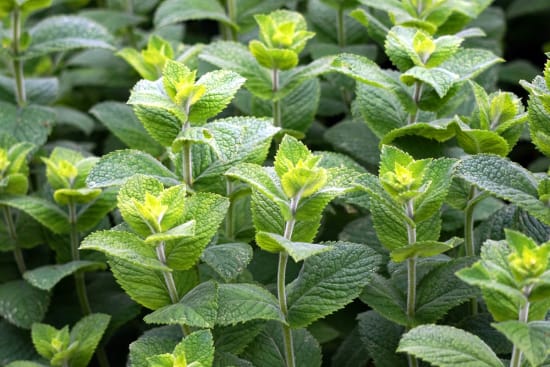
As a location, this perennial plant likes sunny to partial shade.
Since it is very thirsty, it must be watered regularly
(avoid waterlogging). Remember that mint -
depending on the variety - can grow up to a meter in height.
Nevertheless, it is suitable for the balcony, since you should cut it regularly. Caution: mint spreads throughout the flowerbed or balcony box within a few weeks and displaces other plants. Therefore, a root barrier is useful.
Nevertheless, it is suitable for the balcony, since you should cut it regularly. Caution: mint spreads throughout the flowerbed or balcony box within a few weeks and displaces other plants. Therefore, a root barrier is useful.
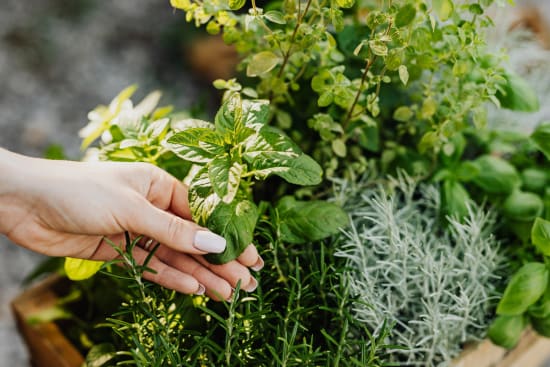
Whether protection, cleanliness, love or money - mint helps
From findings in ancient Egyptian tombs, we know that peppermint
was already known around 1200 BC.
Later, mint was appreciated mainly for its fresh scent.
In ancient Rome, tables were cleaned with mint to remove the smell of old food. The floor was also sprinkled with it to stimulate the desire to eat. In addition, Greeks and Romans wore wreaths of mint on their heads during drinking parties to prevent a «hangover».
In ancient Rome, tables were cleaned with mint to remove the smell of old food. The floor was also sprinkled with it to stimulate the desire to eat. In addition, Greeks and Romans wore wreaths of mint on their heads during drinking parties to prevent a «hangover».
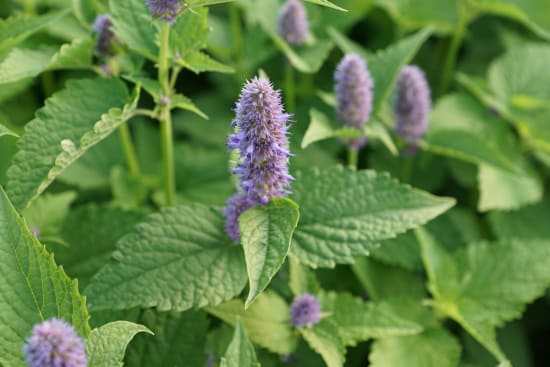
Finally, mint was even considered a symbol of passionate love.
That is why Greek
grooms adorned themselves with mint garlands on their wedding day.
Sailors were more pragmatic. It is said that they used peppermint against seasickness. It was also used to keep the drinking water on board fresh.
Sailors were more pragmatic. It is said that they used peppermint against seasickness. It was also used to keep the drinking water on board fresh.
Fresh herbs delivered directly to your home by mail –
conveniently ordered from FleuropHOME.
More exciting topics about herbs
Sage, Rosemary & Thyme
Sage, rosemary and thyme make us dream of the Mediterranean, of Italy and Provence. They intensely flavor and are very easy to care for.
Marjoram & Oregano
Marjoram and Oregano do belong to the same plant genus. But while marjoram can be combined with other spices, oregano is more commonly used alone.
Parsley & Chives
Parsley and chives shouldn't be planted next to each other because they don't get along. But in the kitchen, they are the most used allrounders.
Basil & Mint
Special and always a delight: basil and mint require a delicate touch. But used correctly, these herbs are really great.
Dill, tarragon & coriander
From tart or slightly peppery to oriental: passionate amateur chefs also like to use special herbs. Dill, tarragon and coriander are three of them.
Storing and preserving herbs
You don't always need fresh herbs. And sometimes you want to preserve them to have them on hand whenever you need them. Here are some tips.



